The north-west corner of Turkey and adjacent regions of Greece and Bulgaria are crowded with snowdrop species. East of the Bosphorus and around the Sea of Marmara is Galanthus plicatus subsp. byzantinus. South of the Sea of Marmara grows Galanthus gracilis, of the classic tall, elegant Turkish form. Also in this region of Turkey is the mysterious, ancient, relictual species G. trojanus. In nearby Greece and Bulgaria are numerous populations of what have variously been referred to G. elwesii or G. gracilis but which should probably now be called G. graecus. The widespread species, G. nivalis occurs at numerous sites in south-east Bulgaria and at a handful of places in northern Greece. Finally, on the Greek island of Samothraki, which is equally close to Turkey-in-Europe, is to be found G. samothracicus, which may or may not be distinct from G. nivalis.
Given that all these species flower in early spring, and that they are probably all interfertile, it is perhaps surprising that the populations of snowdrops in this region haven’t dissolved into a hopelessly confused mélange of hybrids but are, instead, typically easily recognisable as being of a particular species.
The exception to this generalisation comes in Thrace, European Turkey, west of the Bosphorus and east of Greece and Bulgaria. It has been recognised for some time that the snowdrops that grow here are hybrids, the putative parents being G. plicatus and G. nivalis. The iron rules of botanical nomenclature dictate that we must refer to these plants as Galanthus x valentenei nothosubsp. subplicatus! Good old Linnaeus.
Alarmingly labelled ‘hybrid swarms’ of Galanthus are said to grow at numerous locations in Thrace, particularly in a wide strip along the Black Sea coast, but also at isolated sites further south. In February 2015, in atrocious weather, I searched in vain for these swarms in the north western quadrant of Thrace. I’m sure they’re there but they are not ubiquitous and indeed must be confined to relatively small areas.
Thanks to accurate directions from Andy Byfield, who has an incomparable knowledge of Turkish plants and their distribution, I knew exactly where to look on my second visit to the region, in early March this year.
Incidentally, I’d like to record here my gratitude to Andy for invaluable help with planning the snowdropathon’s Turkey sections. Without regular downloads from his capacious brain to my lesser computer, I would hardly have known where to start.
The geology of Thrace is complex and is reflected in human land use. As Andy pointed out to me, the more fertile soils over limestone have been largely converted for agriculture or been subsumed under urban sprawl from Istanbul, whereas thin, sandy, acid soils, such as those of the Belgrad Forest north of Istanbul, are often still covered with forest. Snowdrops are more abundant on the limestone but are now restricted to slopes too steep for cultivation and floodplains along small streams, typically choked with plastic rubbish.

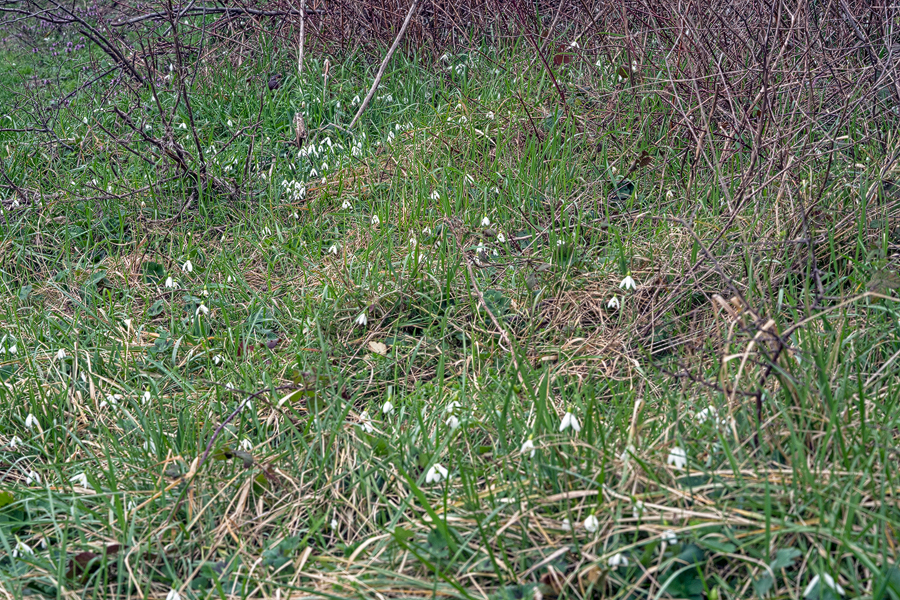
I found them still abundant at numerous sites, flowering well, albeit towards the end of their season, on 2 March 2016 along one such stream, west of Istanbul. There had been abundant rain recently and the deep, alluvial, clay-rich soil was claggy and waterlogged, but the snowdrops didn’t seem to mind.
Later in the day, in the gathering dusk, I found them again in the Belgrad forest, growing in very different conditions, on steep slopes alongside a stream, in stony, thin soil under mixed broadleaf and coniferous forest.
The plants were growing as single bulbs or small clumps. Anecdotally (but this needs to be confirmed by systematic observations), I think that snowdrops have a greater tendency to clump when they are growing in alluvial soil. Many plants produced two scapes per bulb.
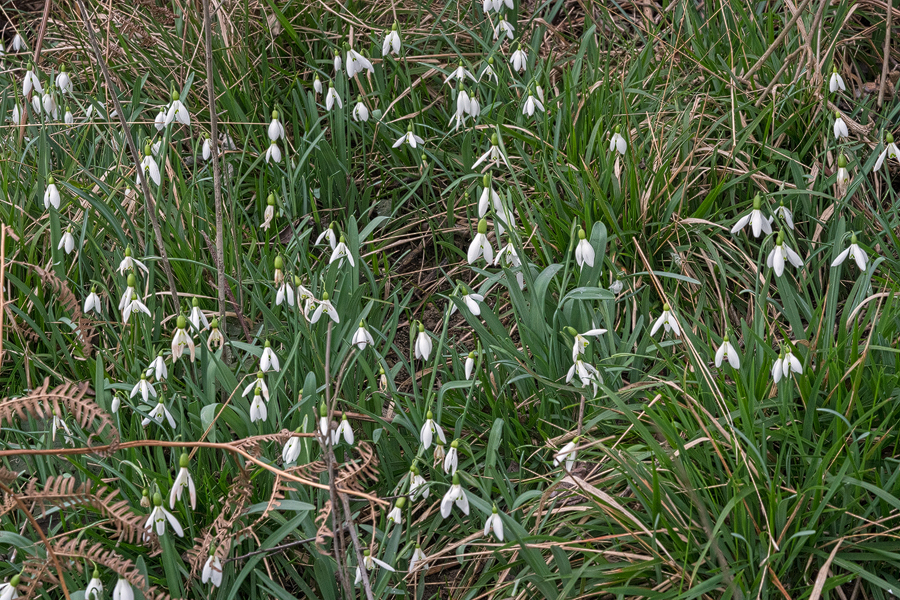
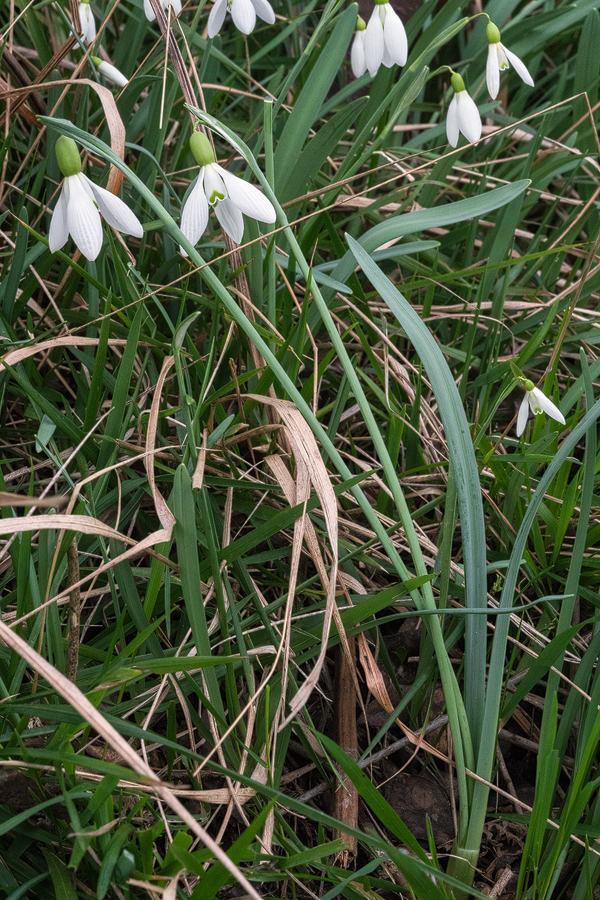
The leaves looked just like those of G. nivalis, albeit of a rather large form. The leaf colour was glaucous, sometimes with a faint paler stripe down the middle of the upper surface. The vernation was clearly applanate and the leaf margins were flat or slightly revolute towards the leaf bases but there was no evidence that I could detect of the explicative vernation characteristic of G. plicatus. A few plants had leaves that suggested the helical twisting characteristic of G. gracilis.
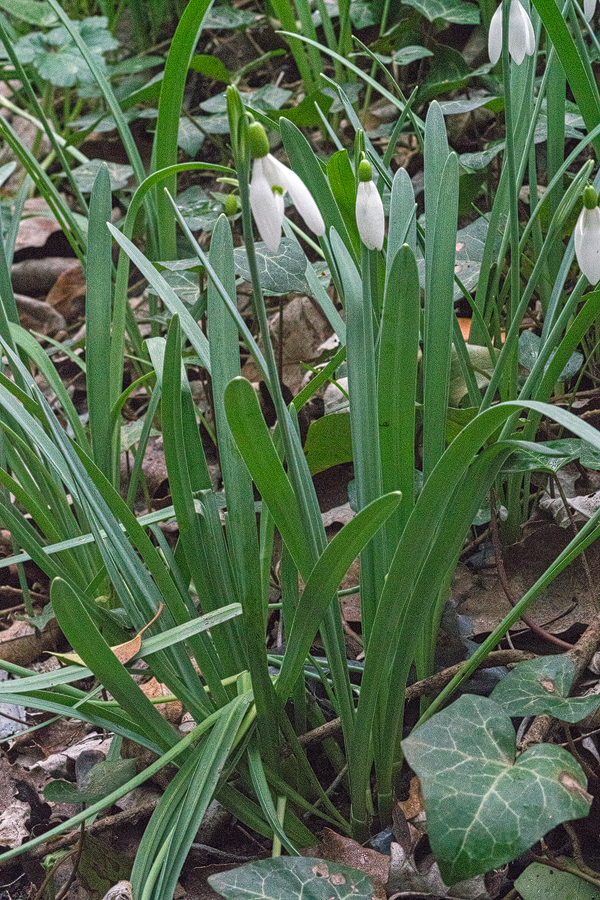
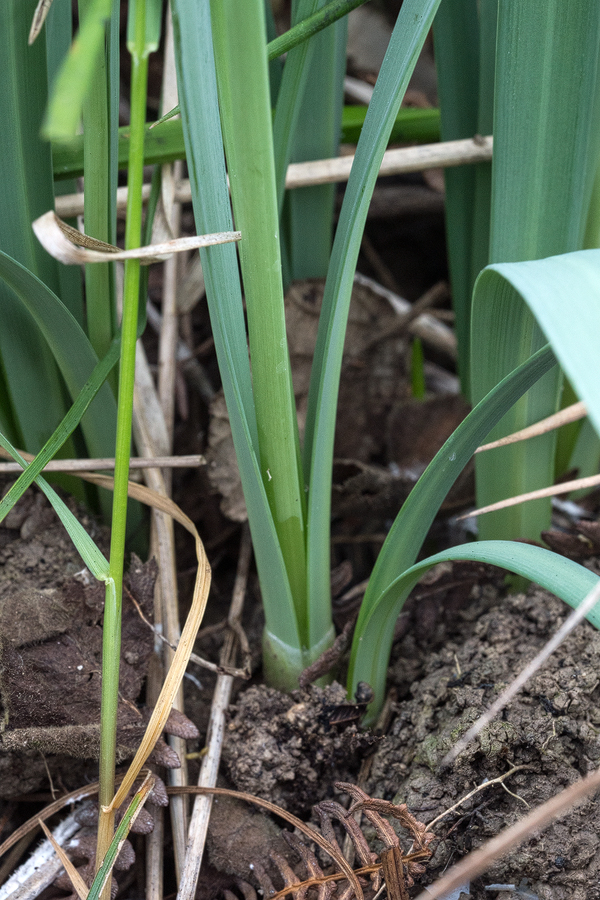
Flower shape was also reminiscent of G. nivalis, with a roughly conical ovary, longish claws and bowed, rather narrow outer segments.
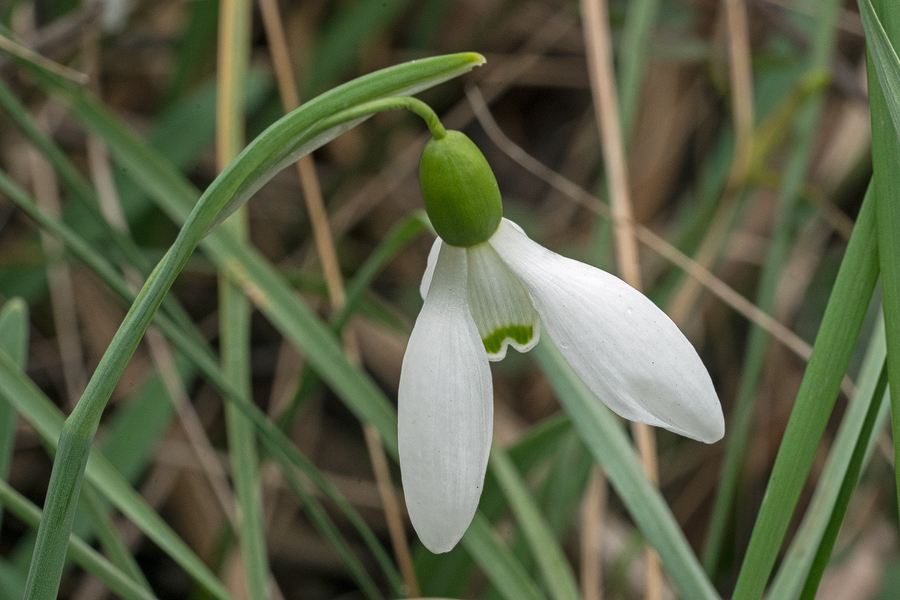
The inner segment markings were interestingly varied. Roughly 90% of the plants that I examined had a single, green apical mark of varying size, from a barely visible inverted-V to a hump-backed bridge occupying up to a fifth of the segment around the typically rather insignificant sinus.
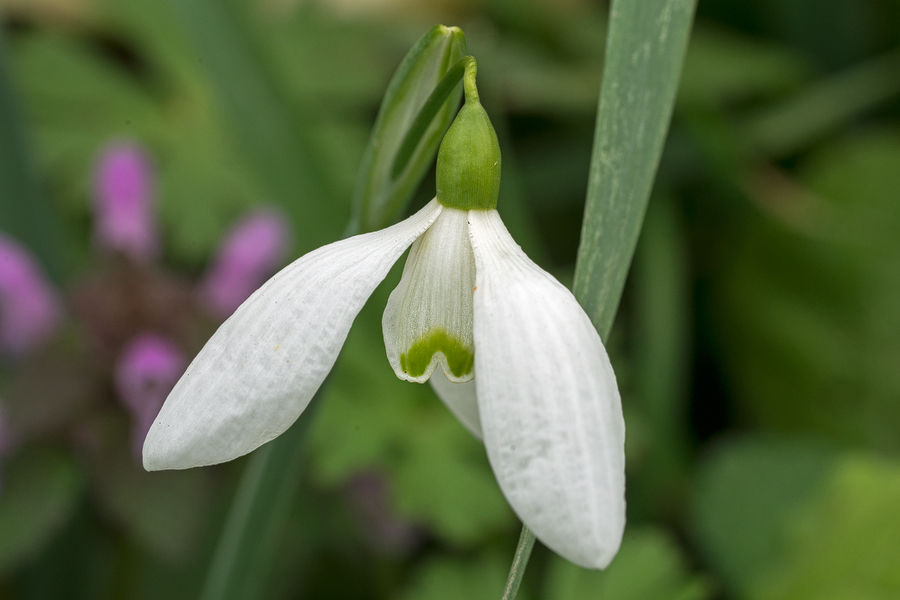
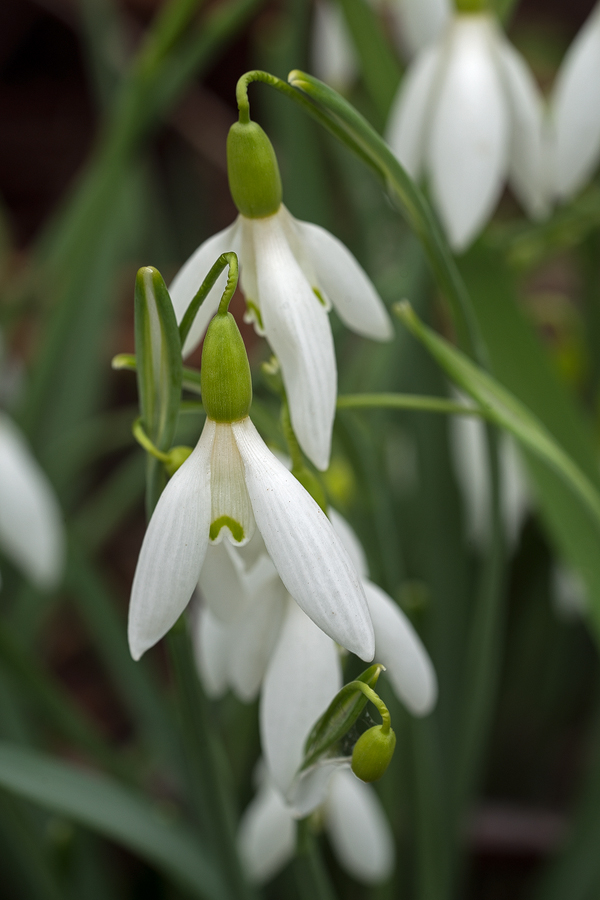
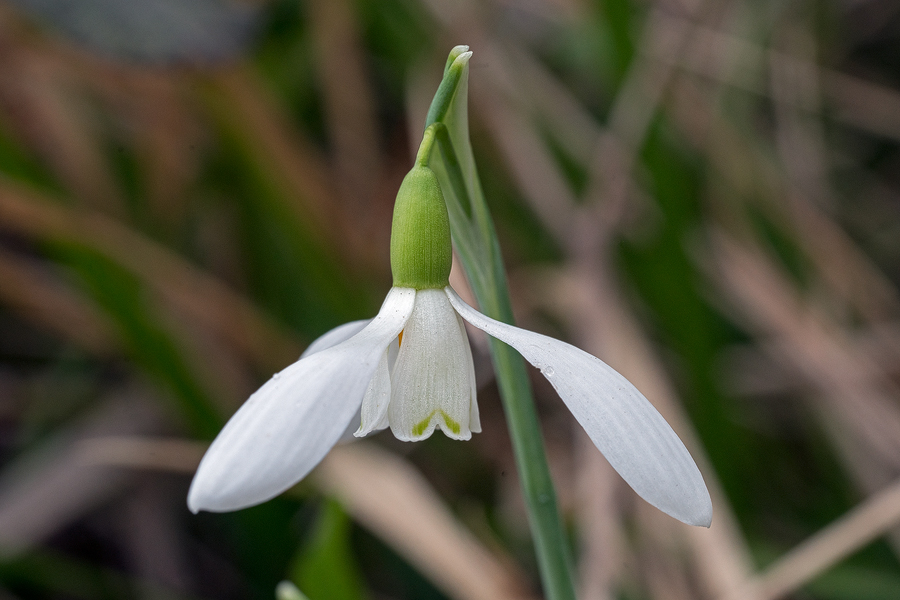
Most of the remaining 10% had, in addition, two green dots at the base of the segment, sometimes with green bleeding from both basal and apical marks into the rest of the segment. A very few plants had the X-shaped inner segment mark typically associated with G. plicatus subsp. byzantinus or G. elwesii.

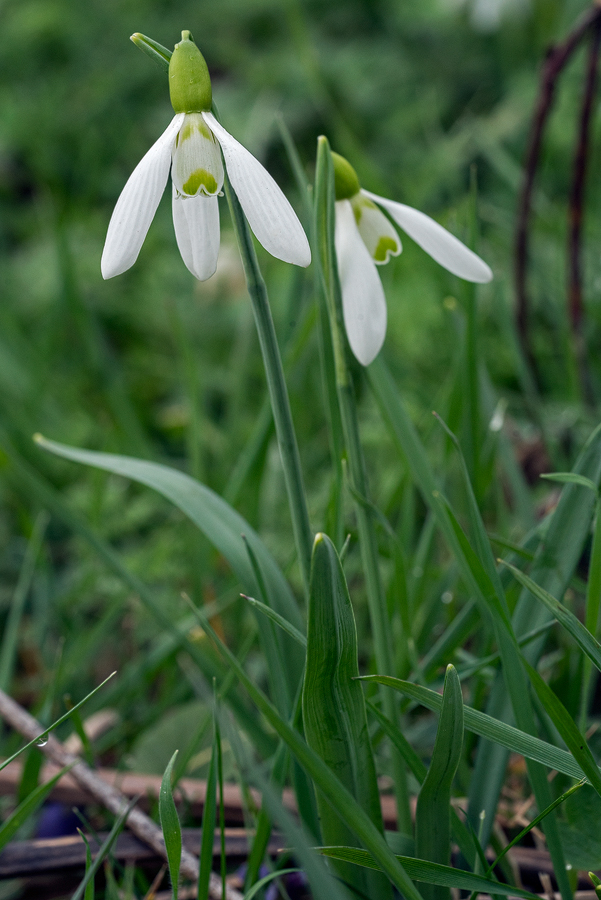
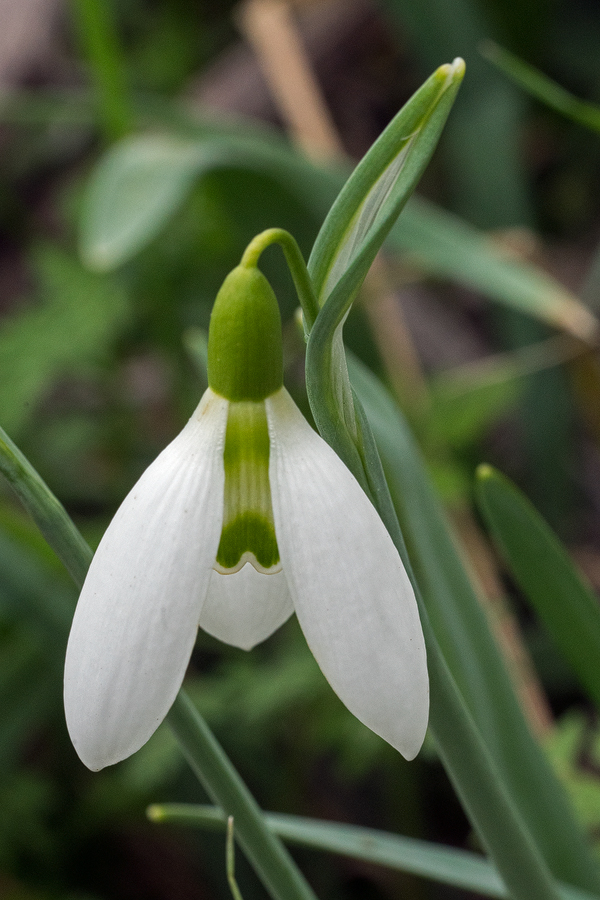
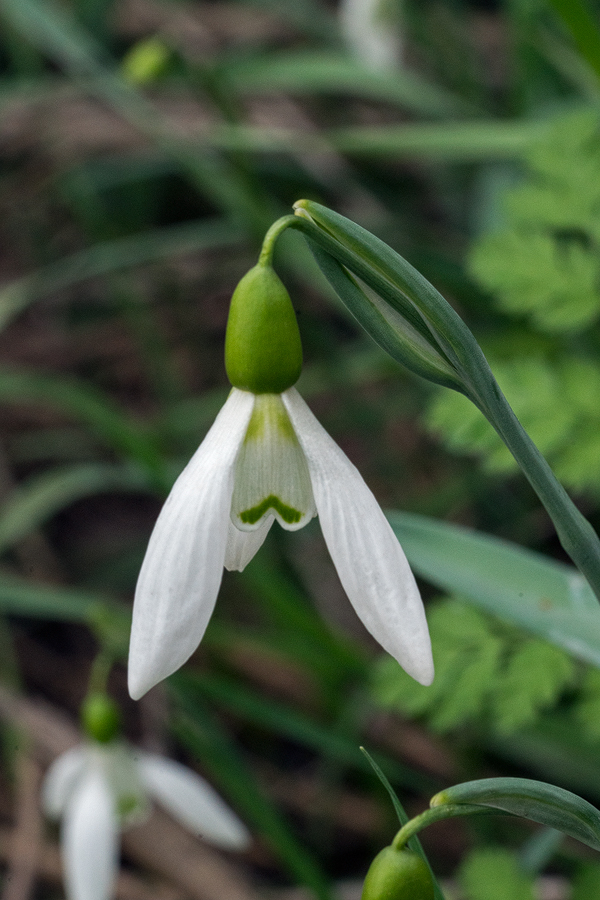
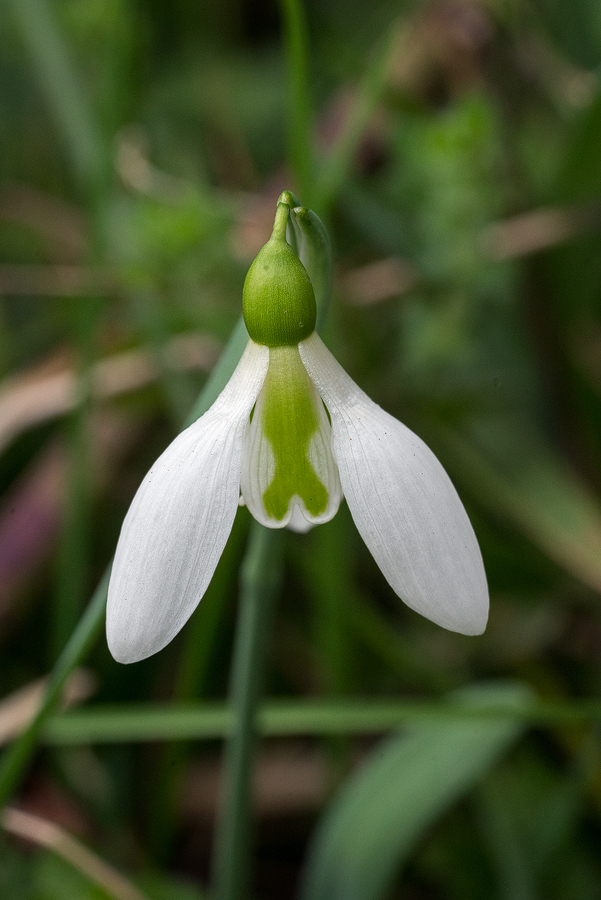
What to make of all this?
As mentioned above, conventional wisdom has it that the snowdrops growing in Thrace are mostly hybrids between G. plicatus subsp. byzantinus and G. nivalis. In a previous blog post (http://www.revolutionsnowdrops.org/galanthus-samothracicus/) I discussed evidence – albeit thin – from genome sizes that seemingly makes it unlikely that G. nivalis is among the parents and I won’t repeat the argument here. I see no good reason, however, why the hybrids could not have a complex parentage, involving several species, including G. gracilis and G. samothracicus. This question can’t be resolved from an armchair, however! What is really needed is a population level study, using DNA barcoding to tease out the ancestry of populations in different parts of Thrace and across the Bosphorus in Asia. Rich benefactors should feel free to contact me regarding funding.
